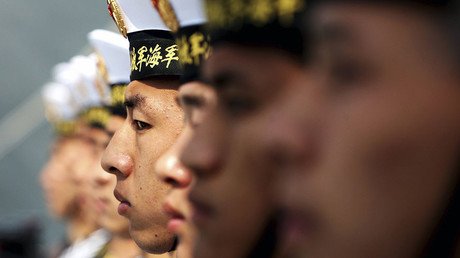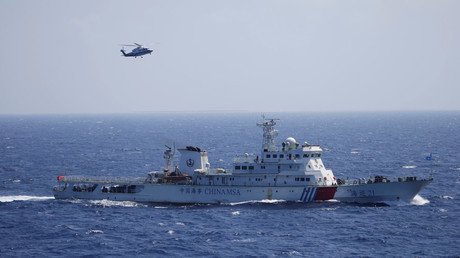US warship visits China for 1st time since Hague rejected Beijing’s S. China Sea claims
The USS Benfold has arrived at the Chinese port of Qingdao in an apparent move to build trust between the US and Chinese navies. The visit comes after a Hague tribunal angered Beijing by rejecting China’s territorial claims in the South China Sea.
The USS Benfold’s commanding officer, Commander Justin L. Harts, said the visit is aimed at “building relationships.”
“Sailors are Sailors at the end of the day, be it in the East or in the West; we all face the same challenges at sea. These similarities unite us. I am sure that by the end of the week we will see that American Sailors and Chinese sailors are as close as any other sailors out on the high seas,” Harts said, as quoted by the US 7th Fleet’s website.
Upon its arrival on Monday, the USS Benfold held a signals exercise with the Chinese navy. It is also scheduled to host a reception and ship visits, with the events aimed at giving Chinese and US sailors a chance to “interact and build relationships through their shared maritime interests.”
China & US relations
The US Navy’s visit is highly significant, as it is the first visit by a US warship since a Hague tribunal ruled that China’s territorial claims in the South China Sea have no legal basis, while adding that Beijing has breached Philippine sovereignty by endangering its ships and fishing and oil projects in the disputed sea.
The ruling angered Beijing, which declared it null and void, further fueling its desire to strengthen its claims in the South China Sea.
Since the ruling, China has vowed to continue working on man-made islands in the Spratly island group, and has launched what it says will be regular aerial patrols over the South China Sea. Beijing also says it will consider whether to declare an air defense identification zone over all or part of the body of water.
China also landed two civilian aircraft on new airstrips on the disputed Mischief and Subi reefs following the ruling, and dispatched its coast guard to block a Philippine fishing boat from reaching a contested shoal.
Moreover, despite Chinese President Xi Jinping telling US President Barack Obama last September that Beijing had no intention of militarizing the Spratly Islands, recent satellite photos have prompted speculation that China is, in fact, doing just that.
The photos, collected and analyzed by the Washington-based Center for Strategic and International Studies, show the construction of what appears to be reinforced aircraft hangars at the Fiery Cross, Subi, and Mischief reefs, The New York Times reported.
Meanwhile, Washington has called on Beijing to respect the tribunal’s ruling, making the USS Benfold’s scheduled visit all the more significant in light of the extreme differences in opinion between the US and China concerning the disputed waters.
China & Japan relations
Meanwhile, already tense relations between China and Japan have worsened, with Japan’s chief cabinet secretary, Yoshihide Suga, accusing China of 14 violations over the weekend.
Those violations included 230 Chinese fishing boats being spotted on Saturday near the Diaoyudao Islands – the Chinese name for the Senkaku Islands. In addition, Japanese authorities say that 14 Chinese ships have sailed into the waters near the islands since Friday, with 12 remaining there as of Monday.
Japan also discovered Chinese surface radar allegedly designed to detect ships on a gas drilling platform on the southeast border of the region.
The Chinese State Oceanic Administration (SAO) reported on Sunday that two Chinese Coast Guard ships were conducting raids near the disputed islands.
Japanese Foreign Minister Fumio Kishida summoned Chinese ambassador Cheng Yonghua on Saturday, and again on Tuesday, calling the crossings “unacceptable.”
After Kishida warned Cheng that ties between the two countries are “deteriorating markedly,” Cheng responded by saying “it is natural that Chinese ships conduct activity in the waters,” Reuters reported.
And as Japan’s foreign ministry and cabinet secretary were speaking out against Beijing, Chinese Foreign Ministry spokeswoman Hua Chunying stated on the government’s website that Beijing has sovereignty over the islands and surrounding waters.
The Senkaku Islands are controlled by Japan, despite being claimed by China.
Beijing lays claim to almost all of the South China Sea, despite conflicting partial claims from Brunei, Malaysia, Vietnam, Taiwan, and the Philippines. It has reportedly built military installations on reclaimed islands, including runways and missile launchers.














